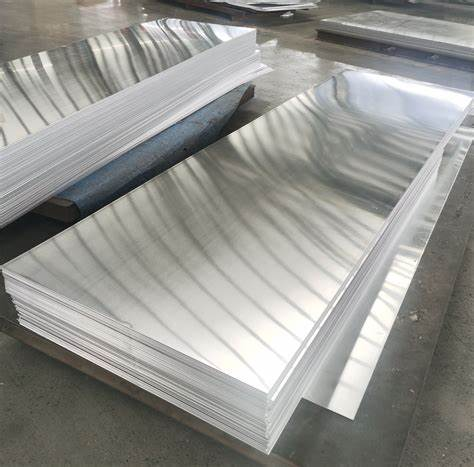Tell me how aluminum plates are made
Time : 2024/12/05

Aluminum plate is a rectangular sheet metal processed from aluminum ingots. It has a wide range of applications, including lighting, home appliances, and furniture in daily life, as well as indoor decoration. In the industrial field, it can also be used for the processing of mechanical parts and the manufacturing of molds.
Aluminum plates can be divided into pure aluminum plates and aluminum alloy aluminum plates based on their aluminum content. The aluminum content of pure aluminum plate can reach 99%, making it one of the aluminum plates with the highest aluminum content. Pure aluminum plate does not contain any other elements and is relatively cheaper compared to other types of aluminum plates.
Aluminum alloy aluminum plate is mainly composed of alloy elements, and its aluminum content is far lower than that of pure aluminum plate. However, it has some special functions and can be used in special environments, such as aerospace devices or ships. Aluminum plates can be divided into thin aluminum plates, conventional aluminum plates, medium thick aluminum plates, and thick aluminum plates based on their thickness.
The thickness of aluminum plate is different from the type of aluminum plate. The thickness of the thin aluminum plate is 0.15-2.0 millimeters; The thickness of conventional aluminum plates is between 20.-6.0 millimeters; The thickness of medium thick aluminum plate is between 6.0-25.0 millimeters; The thickness of the thick aluminum plate is between 25-200 millimeters; Aluminum plates over 200mm are classified as ultra thick plates.
Aluminum plates can be divided into pure aluminum plates and aluminum alloy aluminum plates based on their aluminum content. The aluminum content of pure aluminum plate can reach 99%, making it one of the aluminum plates with the highest aluminum content. Pure aluminum plate does not contain any other elements and is relatively cheaper compared to other types of aluminum plates.
Aluminum alloy aluminum plate is mainly composed of alloy elements, and its aluminum content is far lower than that of pure aluminum plate. However, it has some special functions and can be used in special environments, such as aerospace devices or ships. Aluminum plates can be divided into thin aluminum plates, conventional aluminum plates, medium thick aluminum plates, and thick aluminum plates based on their thickness.
The thickness of aluminum plate is different from the type of aluminum plate. The thickness of the thin aluminum plate is 0.15-2.0 millimeters; The thickness of conventional aluminum plates is between 20.-6.0 millimeters; The thickness of medium thick aluminum plate is between 6.0-25.0 millimeters; The thickness of the thick aluminum plate is between 25-200 millimeters; Aluminum plates over 200mm are classified as ultra thick plates.
Previous page:Already the first
Hanwu Iron and Steel (Shandong) Co., Ltd.

Thank you very much for writing to us. Please leave your message and contact information, we will reply to you within 24 hours.


